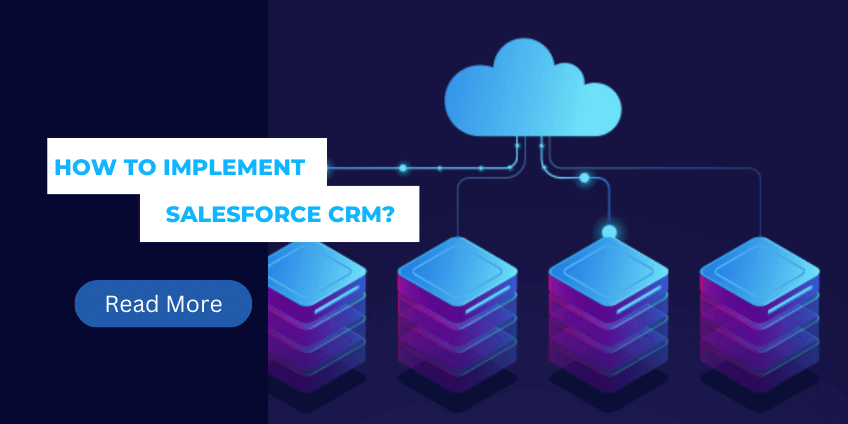Salesforce Marketing Automation Stack
In the realm of digital marketing, the right tools and technologies are crucial for success. The Salesforce Marketing Automation Stack is a robust solution that enables businesses to streamline their marketing efforts, enhance customer engagement, and drive revenue growth. By leveraging a combination of Salesforce’s powerful tools, companies can automate marketing tasks, gain valuable insights, and create personalized customer experiences. This article delves into the components, benefits, and best practices of the Salesforce Marketing Automation Stack, providing a detailed overview for businesses looking to optimize their marketing strategies.
Understanding the Marketing Automation Stack
What is a Marketing Automation Stack?
A Marketing Automation Stack comprises a set of integrated tools and technologies designed to automate and optimize marketing processes. The Salesforce Marketing Automation Stack specifically includes various Salesforce products and services that work together to create a cohesive and efficient marketing ecosystem. This stack allows businesses to manage customer relationships, execute marketing campaigns, analyze data, and drive growth through a unified platform.
Key Components of the Salesforce Marketing Automation Stack
Salesforce Marketing Cloud
Salesforce Marketing Cloud is the cornerstone of the Marketing Automation Stack. It provides a comprehensive suite of tools for email marketing, social media management, advertising, and more. With Marketing Cloud, businesses can create personalized marketing campaigns, automate customer journeys, and track performance metrics in real-time.
1. Pardot
Pardot, a part of the Salesforce Marketing Automation Stack, is a powerful B2B marketing automation tool. It enables businesses to generate and nurture leads, score prospects based on their behavior, and align marketing and sales efforts. Pardot’s robust analytics capabilities help marketers understand campaign effectiveness and make data-driven decisions.
2. Salesforce CRM
Salesforce CRM is integral to the Salesforce Automation Stack, providing a centralized platform for managing customer relationships. By integrating CRM with marketing automation tools, businesses can ensure a seamless flow of information, enabling personalized and timely communication with customers. The CRM also offers valuable insights into customer behavior and preferences.
3. Data Management Platform (DMP)
The Data Management Platform (DMP) within the Salesforce Automation Stack allows businesses to collect, organize, and activate customer data across various channels. By leveraging DMP, marketers can create detailed customer profiles, segment audiences effectively, and deliver targeted marketing messages.
Benefits of the Salesforce Marketing Automation Stack
1. Streamlined Marketing Processes
The Salesforce Automation Stack streamlines marketing processes by automating repetitive tasks, such as email campaigns, lead nurturing, and data analysis. This allows marketers to focus on strategic activities that drive growth and innovation.
2. Enhanced Customer Engagement
Personalization is a key feature of the Salesforce Marketing Automation Stack. By utilizing data and insights, businesses can deliver tailored experiences to customers, fostering stronger relationships and increasing loyalty.
3. Data-Driven Decision Making
With comprehensive analytics and reporting tools, the Salesforce Automation Stack provides valuable insights into campaign performance and customer behavior. This data empowers marketers to make informed decisions and optimize their strategies for better results.
4. Scalability and Flexibility
The Salesforce Automation Stack is designed to scale with businesses of all sizes. Its flexible architecture allows for customization and integration with other tools, ensuring that the stack can grow and evolve alongside the company.
Best Practices for Implementing the Marketing Automation Stack
1. Define Clear Goals and Objectives
Before implementing the Marketing Automation Stack, it’s essential to define clear goals and objectives. Determine what you aim to achieve, whether it’s increasing lead generation, improving customer retention, or enhancing overall marketing efficiency. Clear goals will guide the implementation process and help measure success.
2. Ensure Seamless Integration
For optimal performance, ensure that all components of the Marketing Automation Stack are seamlessly integrated. This includes connecting Salesforce CRM, Marketing Cloud, Pardot, and DMP. A unified platform enables smooth data flow and enhances overall efficiency.
3. Leverage Data for Personalization
Utilize the data collected through the Salesforce Automation Stack to create personalized marketing campaigns. Segment your audience based on behavior, preferences, and demographics to deliver relevant content and experiences.
4. Continuous Monitoring and Optimization
Regularly monitor the performance of your marketing campaigns using the analytics tools within the Marketing Automation Stack. Identify areas for improvement and make data-driven adjustments to optimize your strategies.
Frequently Asked Questions (FAQs):
This FAQ provides a brief overview of the Salesforce Marketing Automation Stack, outlining its components and key features for readers seeking a quick understanding of the topic.
Addressing the benefits of the Salesforce Marketing Automation Stack, this FAQ highlights its potential to streamline marketing processes, personalize customer experiences, and drive revenue growth for businesses of all sizes.
Delving into the components of the stack, this FAQ provides insights into Salesforce Marketing Cloud, Pardot, Salesforce DMP, and Einstein AI, offering readers a deeper understanding of its capabilities and functionalities.
Offering practical strategies for leveraging the stack, this FAQ explores integration, training, testing, personalization, and compliance as key elements for optimizing marketing efforts and achieving success.
This FAQ addresses the scalability of the stack, reassuring readers that whether they’re a small startup or a global enterprise, the Salesforce Automation Stack offers the flexibility and insights needed to drive growth and success.
Conclusion:
The Salesforce Marketing Automation Stack is a game-changer for businesses looking to streamline their marketing efforts, enhance customer engagement, and drive revenue growth. By leveraging its powerful components, businesses can automate repetitive tasks, deliver personalized experiences, and gain valuable insights into their marketing campaigns. Implementing the Marketing Automation Stack with clear goals, seamless integration, and continuous optimization will help you achieve remarkable results and stay ahead in the competitive marketing landscape.
Summary:
This article explores the essentials of the Salesforce Marketing Automation Stack, highlighting its key components, benefits, and best practices for successful implementation. By automating marketing processes, businesses can improve efficiency, enhance customer engagement, and make data-driven decisions. With a focus on clear goals, seamless integration, personalization, and continuous optimization, the Salesforce Marketing Automation Stack can help businesses achieve significant growth and stay ahead in the dynamic world of marketing.
Author Spotlight

Chandan K. Sharma
An entrepreneur and author with a deep passion for technology, CRM, and digital marketing. Chandan is a versatile content creator and expert in CRM, sales automation, and marketing automation. He combines creativity with strategic thinking to deliver innovative, scalable solutions that help businesses streamline operations and drive growth.
